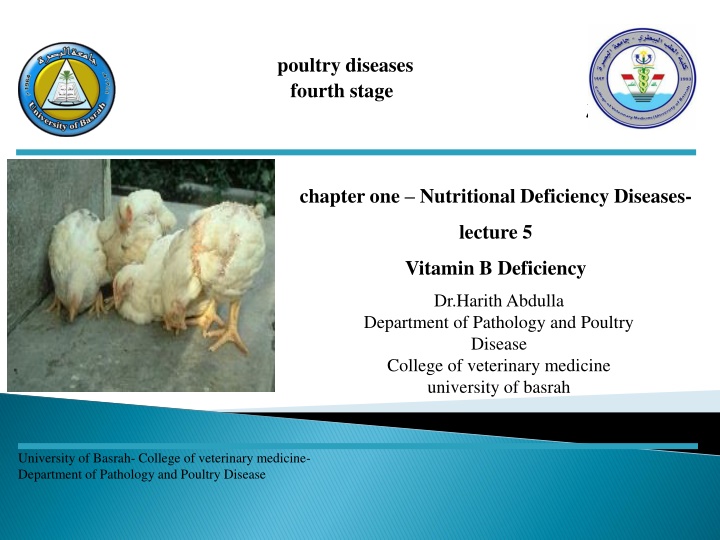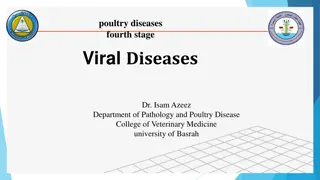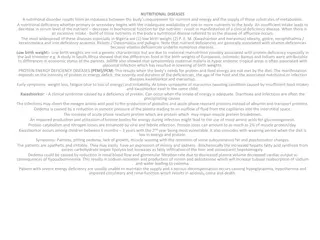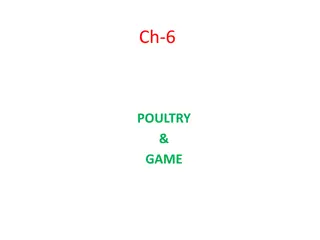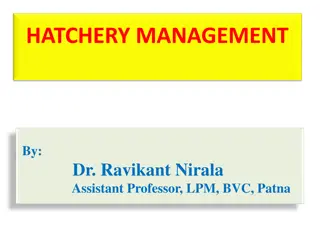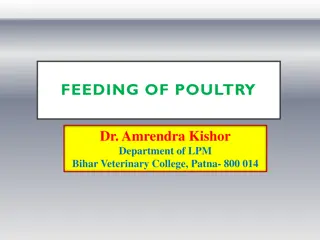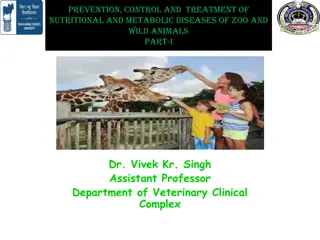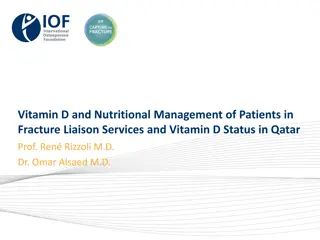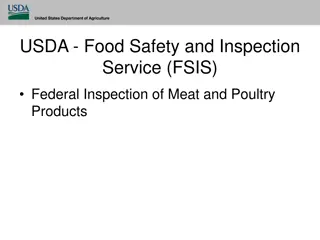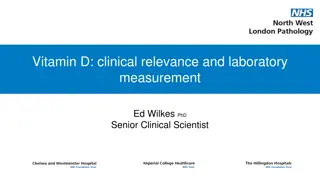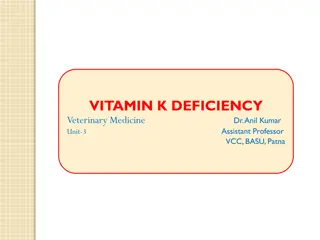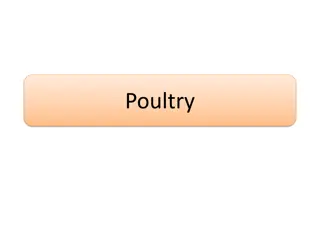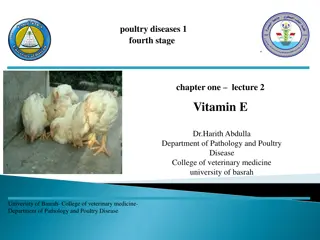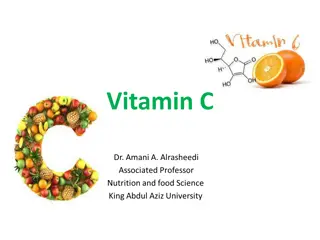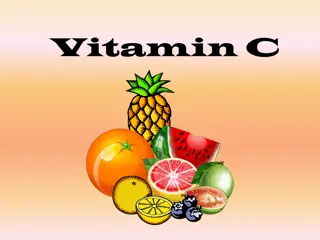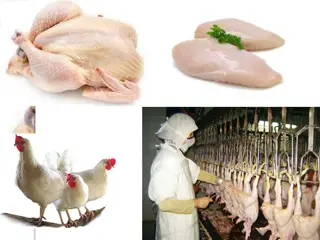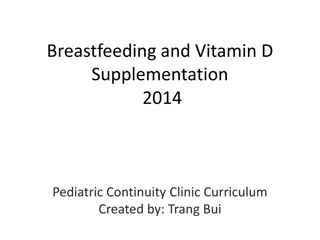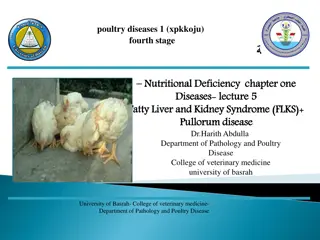Nutritional Deficiency Diseases in Poultry: Vitamin B Deficiency and Symptoms
"Learn about the impact of vitamin B deficiency on poultry health, including symptoms like slow growth, rigid feathers, and low hatchability. Understand the importance of adequate vitamin supply for productivity and hatchability in poultry."
Download Presentation

Please find below an Image/Link to download the presentation.
The content on the website is provided AS IS for your information and personal use only. It may not be sold, licensed, or shared on other websites without obtaining consent from the author.If you encounter any issues during the download, it is possible that the publisher has removed the file from their server.
You are allowed to download the files provided on this website for personal or commercial use, subject to the condition that they are used lawfully. All files are the property of their respective owners.
The content on the website is provided AS IS for your information and personal use only. It may not be sold, licensed, or shared on other websites without obtaining consent from the author.
E N D
Presentation Transcript
poultry diseases fourth stage chapter one Nutritional Deficiency Diseases- lecture 5 Vitamin B Deficiency Dr.Harith Abdulla Department of Pathology and Poultry Disease College of veterinary medicine university of basrah University of Basrah- College of veterinary medicine- Department of Pathology and Poultry Disease
The B complex vitamins are water soluble and not stored to any significant extent in the body. They act in a broad range of metabolic pathways. Simple deficiency is now rare as diets are However, because a continuous supply is required, damage to the intestine or increased demand for some reason may have an effect. usually well supplemented.
Most will reduce productivity, including growth in the young animal, and egg production in the layer. The embryo is particularly dependent on having deposited in the egg. Vitamin deficiencies are especially prone to cause problems of hatchability. adequate supplies of vitamins
1-Pantothenic acid and Biotin Deficiency. Pantothenic acid and Biotin Deficiency. 2 2- - Thiamine Deficiency ( B Deficiency ). Thiamine Deficiency ( B1 1 Deficiency ). 3 3- - Riboflavin ( B Deficiency . Riboflavin ( B2 2) ) Deficiency .
Chick Dermatitis (Pantothenic acid and Biotin Deficiency ) Dermatitis 1 1- -Chick (Pantothenic acid and Biotin Deficiency )
An inflammation of the unfeathered parts of chicks and poults caused by deficiency of vitamin B5 ( pantothenic acid) and biotin. Symptoms: 1-Slow growth and rigid feathers. 2-Low hatchability and high embryonic mortality. Symptoms:
1-Pus like substance in the mouth and grayish white exudates in the prventriculus. 2-Scabby lesions at the corners of the mouth, edge of eyelids, around the vent and bottom of the feet ( Dermatitis). 3- Liver is hypertrophied , spleen sometimes atrophied. Treatment: Injection or oral administration of the vitamin. Treatment:
2 2- - Thiamine Deficiency ( B Thiamine Deficiency ( B1 1 Deficiency ) ( ( Polynuritis Function of Thiamine ( B1) Thiamine is required by poultry for the metabolism of carbohydrate. In birds, vitamin B1, (thiamine) deficiency is clinically and morphologically manifested with Stargazing Deficiency ) Polynuritis )
Symptoms: 1-Symptoms appear in 2-3 weeks after chicks were placed on thiamine deficient diet. 2-Anorexia followed by loss of weight, leg weakness and unsteady gait. 3-Paralysis of muscles of legs, wings and neck. 4-The chicken characteristically sits on its flexed legs and draws the head back in a *Stargazing* position.
Treatment : The bird response quickly with oral administration of thiamine.
3 3- - Riboflavin ( B is characterized with impaired oxidation processes and dystrophic changes in the peripheral nerves. Riboflavin ( B2 2) Deficiency ) Deficiency (Curled Toe Paralysis) (Curled Toe Paralysis)
Is a nutritional disease caused by vitamin B2 deficiency. Symptoms: 1-Age : 3-4 weeks. 2-Diarrhea develops between the first and second week. 3-The chicks do not walk unless forced, and walk with the aid of wings. Symptoms:
1-Atrophied thymus gland. 2-Enlargement of nerves, 4-5 times, due to edema. 3- Notched beak. Treatment: High riboflavin diet. Treatment:
